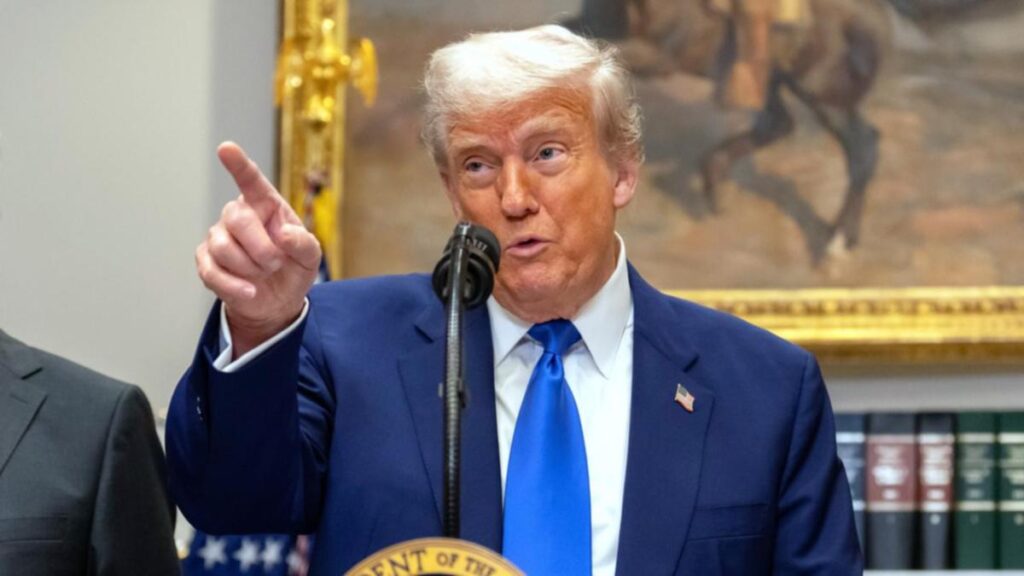US President Donald Trump has signed a wide-reaching executive order directing drug makers to lower the prices of their medicines to align with what other countries pay that analysts and legal experts say could be difficult to implement.
The order gives drug makers price targets in the next 30 days, and will take further action to lower prices if those companies do not make “significant progress” towards those goals within six months of the order being signed.
Trump told a press conference that the government would impose tariffs on companies if the prices in the US did not match those in other countries and said he was seeking cuts of between 59 per cent and 90 per cent.
“Everybody should equalise. Everybody should pay the same price,” Trump said.
Investors were sceptical about the order’s implementation, and shares -which had been down overnight on the threat of “most favoured nation” pricing – recovered and rose in early morning trade on Monday.
The United States pays the highest prices for prescription drugs, often nearly three times more than other developed countries.
Trump tried in his first term to bring the United States in line with other countries but was blocked by the courts.
Trump’s drug pricing proposal comes as the president has sought to fulfil a campaign promise of tackling inflation and lowering prices for a host of everyday items, from eggs to petrol.
Trump said his order on drug prices was partly a result of a conversation with an unnamed friend who told the president he got a weight loss injection for $US88 ($A138) in London and that the same injection in the US cost $US1300.
If drug makers do not meet the government’s expectations, it will use rule making to bring drug prices to international levels and consider a range of other measures, including importing medicines from other developed countries and implementing export restrictions, a copy of the order showed.
Trade groups representing biotech and pharmaceutical decried the move.
“Importing foreign prices from socialist countries would be a bad deal for American patients and workers. It would mean less treatments and cures and would jeopardise the hundreds of billions our member companies are planning to invest in America,” PhRMA CEO Stephen Ubl said in a statement.
Ubl said the real reasons for high drug prices are other “countries not paying their fair share and middlemen driving up prices for US patients”.
The order also directs the US Federal Trade Commission to consider aggressive enforcement against what the government calls anti-competitive practices by drug makers.
“We’re all familiar with some of the places where pharmaceutical companies push the limits to prevent competition that would lower their prices,” one White House official said, pointing to patent protections and deals drug makers make with generic companies to hold off on cheaper copies.
The executive order is likely to face legal challenges, particularly for exceeding limits set by US law, including on imports of drugs from abroad, health policy lawyer Paul Kim said.
“The order’s suggestion of broader or direct-to-consumer importation stretches well beyond what the statute allows,” Kim said.
The FTC has a long history of antitrust enforcement actions against pharmaceutical and other healthcare companies.
“President Donald Trump campaigned on lowering drug costs and today he’s doing just that. Americans are tired of getting ripped off. The Federal Trade Commission will be a proud partner in this new effort,” FTC spokesman Joe Simonson said.
The executive order differed from what drug makers had been expecting.
Four lobbyist sources told Reuters they were expecting an executive order that called for “most favoured nation” pricing on a subset of Medicare drugs.
“Implementing something like this is pretty challenging. He tried to do this before and it was stopped by the courts,” said Evan Seigerman, analyst at BMO Capital Markets.
The White House officials did not specify any targets.
Trump’s order also directs the government to consider facilitating direct-to-consumer purchasing programs that would sell drugs at the prices other countries pay.
It also orders the Secretary of Commerce and other agency heads to review and consider actions regarding the export of pharmaceutical drugs or ingredients that may contribute to price differences.

